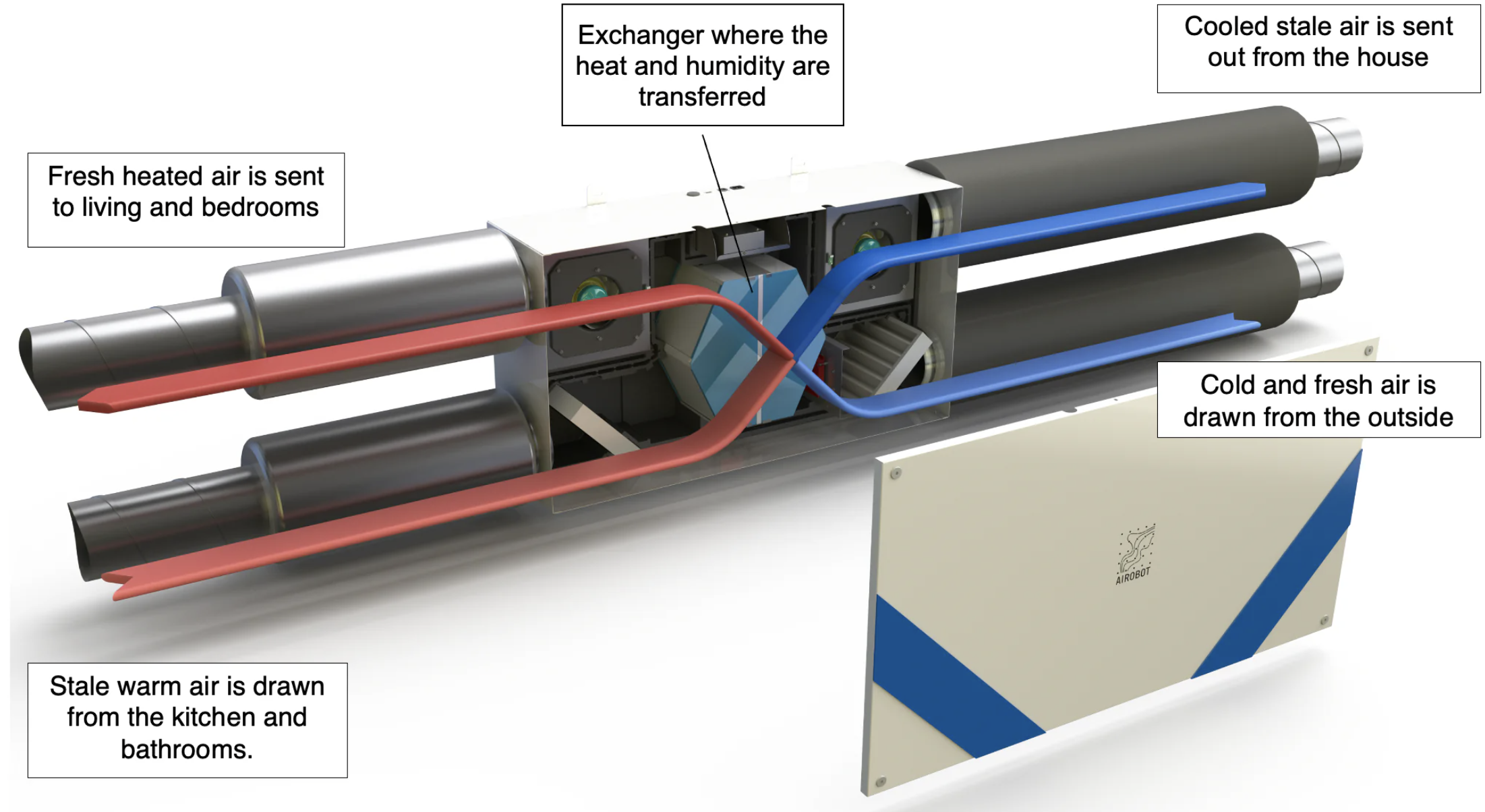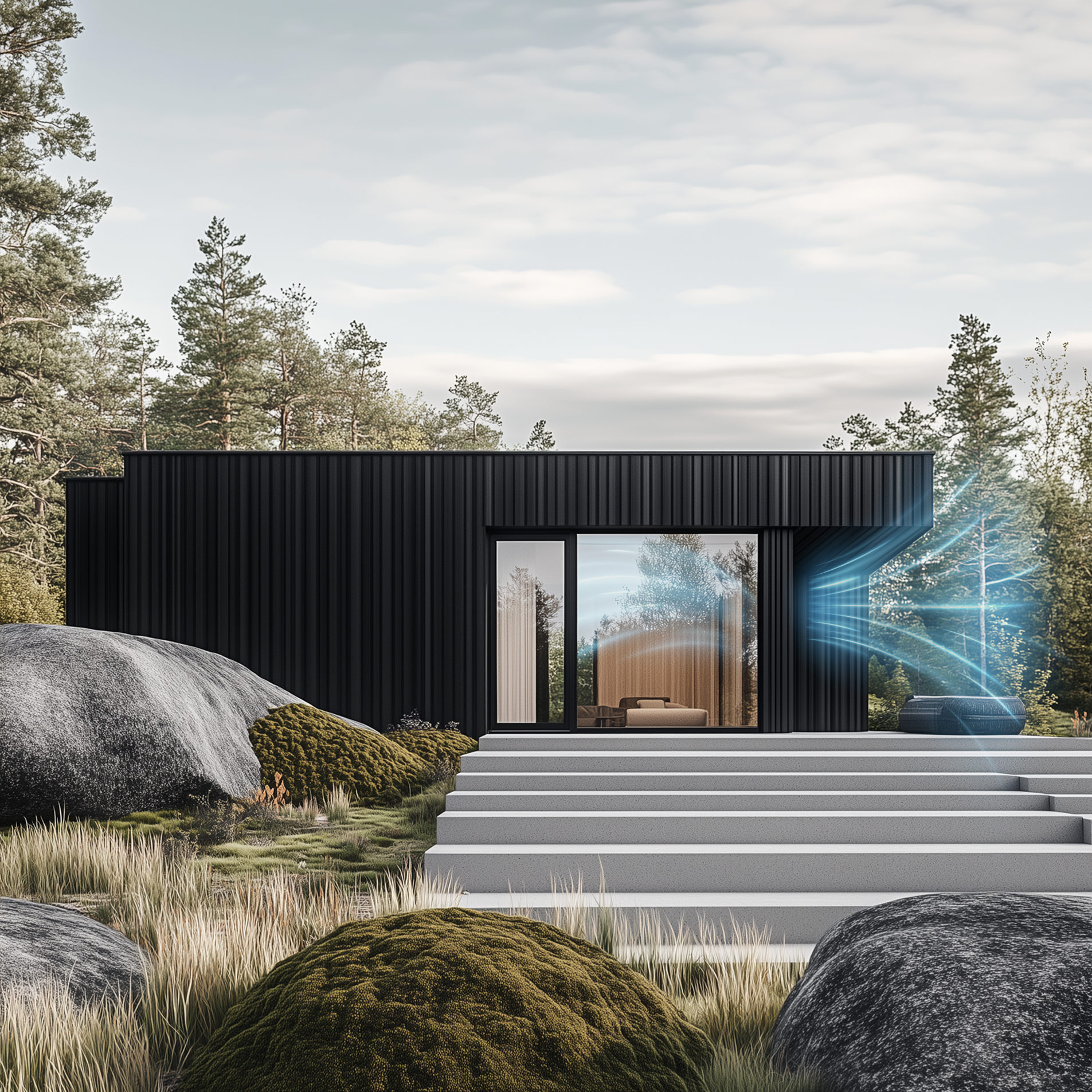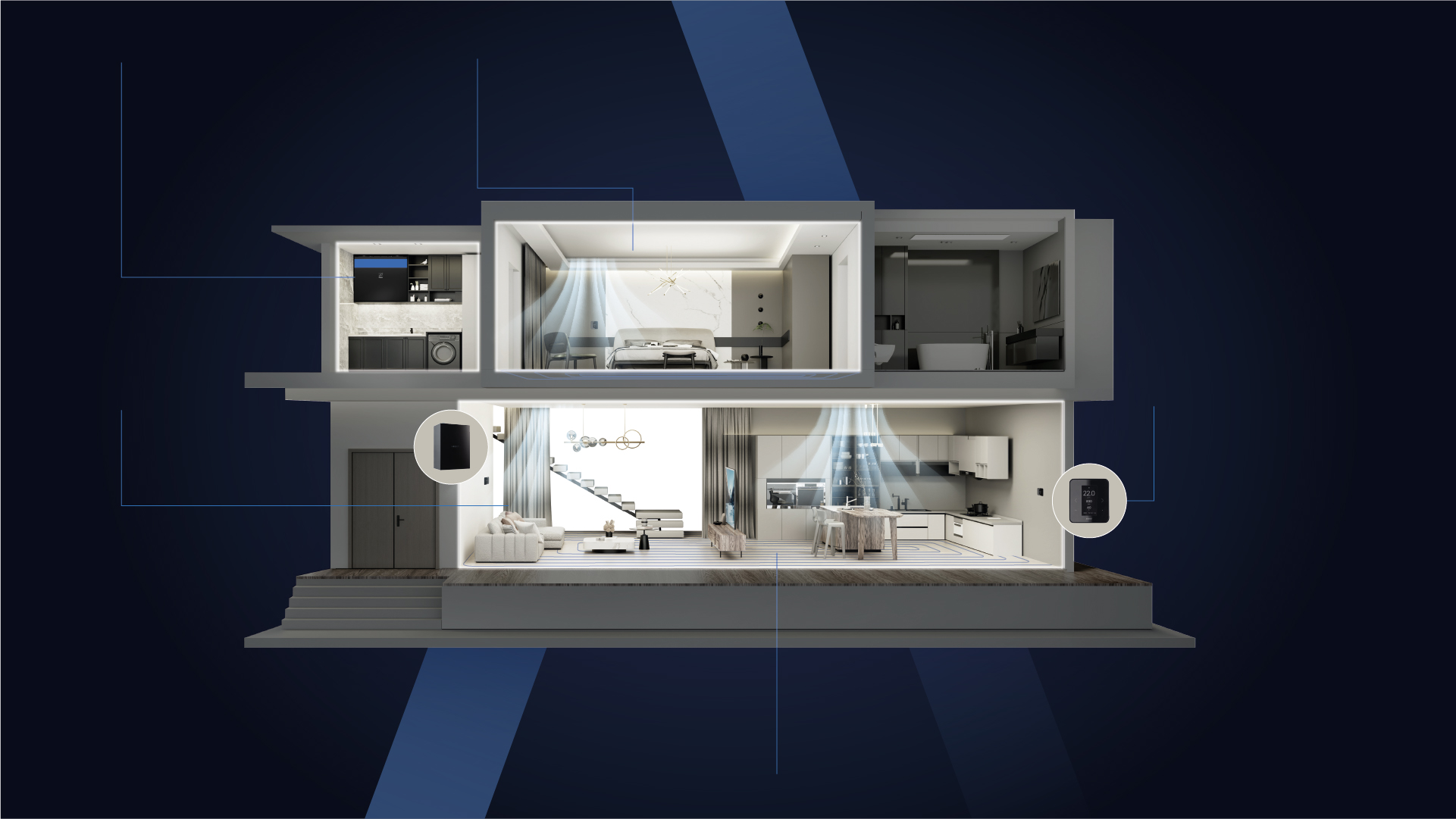Ventilation systems with heat and humidity recovery have been around for over a decade, but they’ve recently taken center stage as homes become better insulated and more airtight.
This blog post explains how these systems work — and why they’re worth considering for your home.

Let’s start from the beginning. Why Do Modern Homes Need Ventilation?
Today’s homes are built to keep warmth in and energy loss out. That’s great for your heating bill, but not for indoor air quality. Without natural airflow through cracks or open windows, stale air builds up, and fresh air has a hard time getting in.
You could open a window, but during cold winters, that means losing precious heat — not ideal in Northern and Central Europe. A modern ventilation system solves this by ensuring constant air exchange while keeping the warmth indoors.
Right humidity levels are also essential for healthy living. According to calculations by researchers at the University of Lincoln, an average family of 4 produces around 10.43 liters of water per day. Cooking food, taking a bath and shower, washing dishes, and even breathing produce a lot of moisture in the household, which begins to circulate in the air.
Without proper ventilation, the moisture in a modern home would build up fast — creating the perfect conditions for mold, fungi, and dust mites. At the same time, air that’s too dry can irritate your skin and airways, and make you more vulnerable to viruses.

How do humidity and heat recovery ventilation devices work?
Think of it like your nose in winter. When you breathe in, your nose warms the cold air before it hits your lungs. When you exhale, the heat is absorbed back into your nasal passages.
A heat recovery ventilation (HRV) unit works similarly. It takes the warmth from outgoing air and transfers it to fresh air coming in. This happens inside a heat exchanger — a stack of plastic plates that allow heat to transfer without mixing the airflows. That way, the incoming air is clean and already warm.
The result? Less heating required, lower energy bills, and a more comfortable home. Top-quality units, like those from AIRobot, can recover up to 90% of heat energy.
Ventilation devices with heat recovery (HRV – Heat Recovery Ventilation) work almost the same way. The air ventilated out of the building is warm, and its heat is transferred to the cold air coming from outside.
Plate heat exchangers are built into the ventilation units transmitting this heat. The outgoing, warm air is directed through thin plastic plates that “absorb” heat.
The incoming warm air also passes through the heated plastic plates, but it does so from the other side. This way, the two air streams do not come into contact with each other, and the incoming air remains clean.
What About Humidity Recovery?
Energy recovery ventilation (ERV) goes a step further. Using a special membrane inside the heat exchanger, ERV systems also transfer humidity from outgoing air to incoming air. This helps maintain optimal indoor humidity levels — especially important in winter, when outside air is dry.
AIRobot’s ERV units recover up to 80% of humidity. The membrane is antibacterial, requires minimal maintenance, and keeps your air clean and comfortable year-round.

Why Choose Ventilation with Heat and Humidity Recovery?
1. Save Energy
Opening windows in cold weather is wasteful. ERV systems recover heat and moisture, keeping indoor air fresh and warm — all while reducing heating needs.
2. Improve Health
Dry indoor air increases susceptibility to illness and discomfort. Balanced humidity supports respiratory health and helps prevent wood surfaces in your home from cracking.
In short: A good ERV system supports both your wallet and your well-being.
Choosing the Right Size for Your Home
Make sure your unit matches the size of your home. As a rule of thumb, choose a device that’s at least 30% more powerful than the minimum requirement. This lets the system operate efficiently without running at full capacity all the time — reducing both energy use and noise.
Why AIRobot?
AIRobot units are built to blend in and take care of everything in the background. Each system features:
- Up to 90% heat recovery
- Up to 80% humidity recovery
- No moving parts in the heat exchanger — ensuring long-term durability
- Separate airflows — so viruses, bacteria, and odors don’t get recycled back into your home
- Integrated sensors for CO₂, humidity, and temperature, automatically adjusting airflow for optimal air quality
Everything works quietly, efficiently, and automatically — so you can focus on living well, while AIRobot handles the rest.


